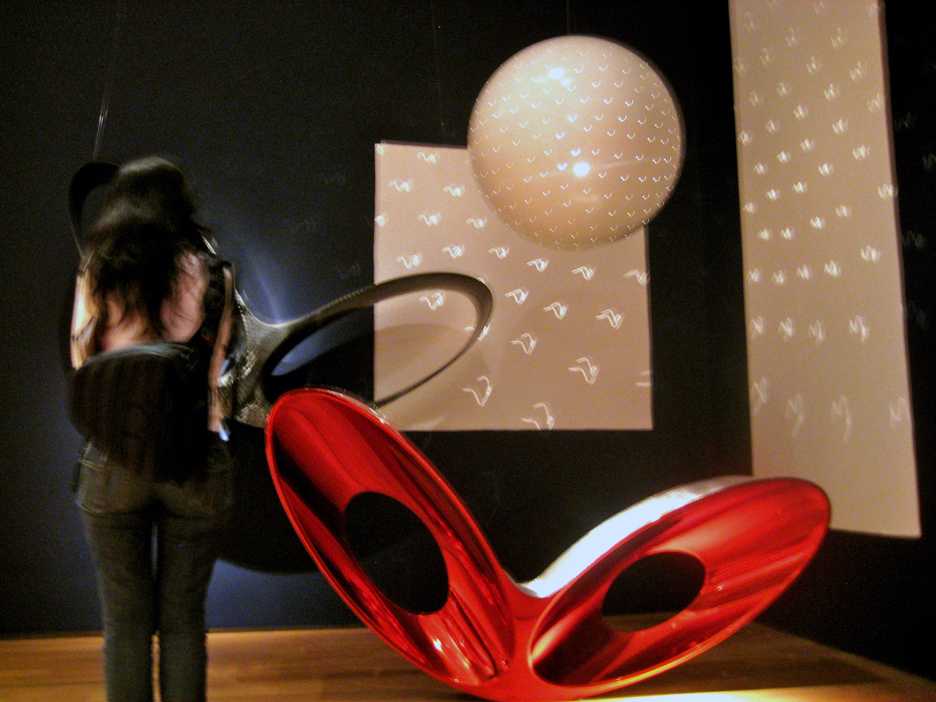More Discipline Needed in Arad Exhibit at MoMA
June 25, 2011

Published: September 24, 2009
The reason Paola Antonelli, the senior curator of the department of architecture and design at MoMA, has described Ron Arad as one who “stands out for his daredevil curiosity about technology and materials and for the versatile nature of his work” is because Arad subscribes to no single discipline within his artwork. His latest exhibition, entitled “Ron Arad: No Discipline,” currently at The Museum of Modern Art (MoMA), represents an amalgam of related branches within art and design, specifically functional design, installation art, sculpture and architecture.
Arad, an Israeli-born artist, highlights the strengths of multiple artistic genres and the strength of his own work by rebelling against creating art within a particular medium and favoring the creation of art across boundaries. The art, however, is weakened by an austere display that fails to live up to the title of the exhibition, focusing on functional design elements over Arad’s dual commitment to visual arts and design.
In “The Designer as Author,” an essay about the exhibition, Antonelli describes the show as one that avoids “any separation between industrial design, one-off pieces, architecture, and architectural installation.”
However, the curator’s focus on avoiding “any separation” results in Arad’s “Cage Sans Frontières” being treated as a faux museum within MoMA. The massive architectural form composed of Corten steel (with a rusty surface) and stainless steel is limited as a work of art embodying sculpture, architecture and installation art disciplines by the arrangement of Arad’s other pieces.
The groups of individual works, especially the art being displayed on the shelving within the “Cage Sans Frontières” structure, emphasize functional design over all other disciplines and make the centerpiece of the exhibition appear more as an ultra-modern “furniture store” than a work of art embodying numerous art disciplines, said Lauren Narvesen, a senior art history major at Fordham College at Lincoln Center (FCLC).
It is clear that the various objects placed internally divert focus away from the central structure. Paradoxically, the empty interior spaces make this part of the exhibition look unfinished. Regardless, Arad’s use of contrast remains prominent in the exhibit due to the numerous shadows that cascade over the fabric and enclose the steel frame of “Cage Sans Frontières.” The silhouettes of the sculptural furniture situated on the interior shelving mimic images from department store windows, removing the viewer from the museum and pushing them down 5th Avenue. Small television screens within and surrounding the main piece display video of other works by Arad not featured in the exhibit as well as time-lapse footage of the construction of “No Discipline.”
Antonelli seems to have overly catered to the average viewer (who sees chair or table before sculpture or installation) rather than arranging the pieces in a way that stresses the interdisciplinary themes of the work. Luckily, Arad’s successful management of light, shadow, and reflection within each of his works stands apart from the amateur display of Antonelli. Her presentation of Arad’s work leaves viewers appeased by the artist’s goals of functionality and design, but yearning for an improved show of his abstraction and self-expression.
Of all the groupings outside “Cage Sans Frontières,” the simple arrangement of “Paved With Good Intentions Table N°48,” “Paved With Good Intentions Table N°57,” “Paved With Good Intentions Table N°34” and “Ge-Off Sphere” is most successful, largely due to the works themselves. Arad’s blending of art and design, as well as his juxtaposition of light and dark, is very strong within this assemblage.
As the fluid, reflective shapes leave the ground and creep up the walls, the boundaries between art and functional design deteriorate. Although this grouping essentially consists of three coffee tables and a lighting fixture, the light reflecting from the spiraling “Ge-Off Sphere” onto the fun house mirror-tables creates a vision far from functionality, more in line with abstract and non-disciplinary art and design.
A less successful feature of “No Discipline” is the family of objects including “I.P.C.O (Inverted Pinhole Camera Obscura)” and “Blo-Void 1.” Similar to the aforementioned grouping, these pieces blend art and design through light and shadow, specifically through the projection of squiggled lines on the walls and floor surrounding the spherical light-emitting installation piece. However, its success lies more in what the work produces (playful, shadowy images) than the work itself. The arranged repetition of “Blo-Void 1,” with one object hanging from the wall and another on the floor, does little for the exhibition other than take up space.
One of the most interesting of the functional pieces making up “No Discipline” was Arad’s “Shadow of Time.” The work exists as part sculpture, part lighting device and part time-keeping mechanism. The eerie clock face shadow projected on the wall is an image one could easily envision as representative of fleeting life and living on borrowed time. The out of focus, off-centered projection of numbers and clock hands, although likely done purposefully, seems lazy and deficient. This is an easily overlooked instance where more discipline on the part of the curator would have been beneficial.
“Ron Arad: No Discipline” runs on the sixth floor of MoMA until Oct. 19 when the exhibition moves to Paris. The melding of artistic disciplines within the pieces themselves, not to mention the ability to walk through and around “Cage Sans Frontières” and imagine where that outlandish chair would fit in your apartment, makes the exhibition worth seeing. However, if strange, quasi-functional housewares arranged in and around a symmetrical, stretched-out steel cage does not seem worth the $12 student admission fee, wait until a Friday evening. You’ll discover an exhibition of creative, discipline-merging works of art arranged like Disney World for art snobs, without having to deal with too many of the snobs. MoMA offers free admission on Fridays from 4 p.m. to 8 p.m.












